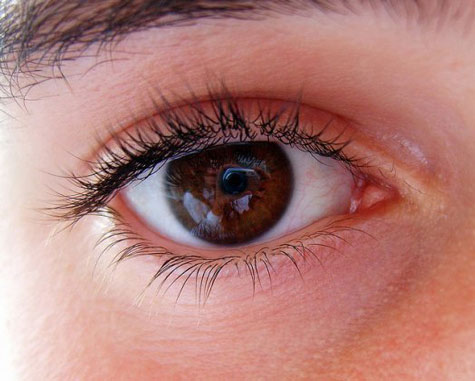Stem cell transplant to cure blindness
American doctors have performed the first laboratory-grown retinal cell transplant surgery in two patients who were blinded due to macular degeneration. This is the second case in the world to test human stem cell therapy.
The medical community considers this second series of stem cell treatment experiments an important step in stem cell treatment. Last year, biotech company Geron started the experiment using stem cells to treat spinal-related injuries.

Stem cell treatment can cure common blindness. (Artwork: Flick)
This eye surgery was conducted by Steven Schwartz, head of the retina at the Eye Institute Jules Stein, University of California, Los Angeles (USA) on Tuesday July 12 last. Advanced Cell Technology, a biotech company with a laboratory in Marlborough, Massachusetts, funded this surgery.
Previously, the company needed to get approval from the US Department of Health's Food and Drug Administration (FDA) for the company to conduct a trial to treat 24 patients with ' dry ' macular degeneration. and an early form of the disease called Starfardt .
' We are very supportive of this treatment, because it is a very potential method ,' said Steve Rose, the lead researcher at the Fighting Blindness Foundation, a non-profit organization that has invested more than $ 2 million. to perform experiments on animals said.
During the display of Advanced Cell's leading products in recent laboratories, it was shown through microscopic growth of retinal pigment epithelial cells in a bacterial culture plate, in that many cells already have the brown color of adult cells.
Advanced Celll believes that by transplanting new laboratory-grown cells into the human eye, this condition can be cured. Because blindness is due to the mechanism when the retinal epithelial cells are damaged when the macula degenerates, the receptor cells stimulate the light to die, and gradually the center of view of eyes will be damaged.
Embryonic stem cells can develop in any kind of human tissue. It has the potential to be treated for all kinds of diseases from Alzheimer's to hair loss. However, the application of this treatment is still very limited, even in the near future, Lanza said.

Embryonic stem cells look through a microscope. (Photo: Redorbit).
It is no coincidence that the first two experimental surgeries using the stem cell method of Geron and Advanced Cell involve nerve cells. " The neurons have their own neurons, and they tend to produce neural epithelium, a type of cell in the embryo that makes up the nervous system ," Lanza said. Therefore, the production of other types of cells, such as liver cells, faces many difficulties.
Another obstacle is the immune system often rejects transplant cells . Many scientists have proposed treating type 1 diabetes with stem cell therapy in laboratories. However, this treatment requires the use of very strong immunosuppressant drugs, which have side effects that are as bad as or even more than those that want to be cured; such as cancer.
Lanza said this is why stem cell treatment trials are currently targeting areas of the body such as the spine, brain, and eye parts, where the body's immunity to factors the outside is partially or completely prevented, according to a mechanism called ' immune privilege '.
Currently the United States has nearly 10 million other Americans suffering from macular degeneration. UN figures since 2006 show that there are 180 million blind people in the world, of which more than 40 million are blind.
- Successfully cure blindness due to macular degeneration
- Mexico focuses on promoting the creation of stem cell banks
- Be careful about stem cell therapy
- Stem cells are transplanted on pigs successfully
- It was possible to transplant stem cells from one person to another
- The paradise and barrier of human embryonic stem cells
- China found a cure for blindness from gold and titanium
- In the next 10 years, artificial heart can replace heart transplant surgery
- The first stem cell transplant performed successfully
- Transplant human beta cells into mice, cure diabetes
- Stem cell transplantation to treat 40 critical diseases
- Blindness with human embryonic stem cells
 Green tea cleans teeth better than mouthwash?
Green tea cleans teeth better than mouthwash? Death kiss: This is why you should not let anyone kiss your baby's lips
Death kiss: This is why you should not let anyone kiss your baby's lips What is salmonellosis?
What is salmonellosis? Caution should be exercised when using aloe vera through eating and drinking
Caution should be exercised when using aloe vera through eating and drinking